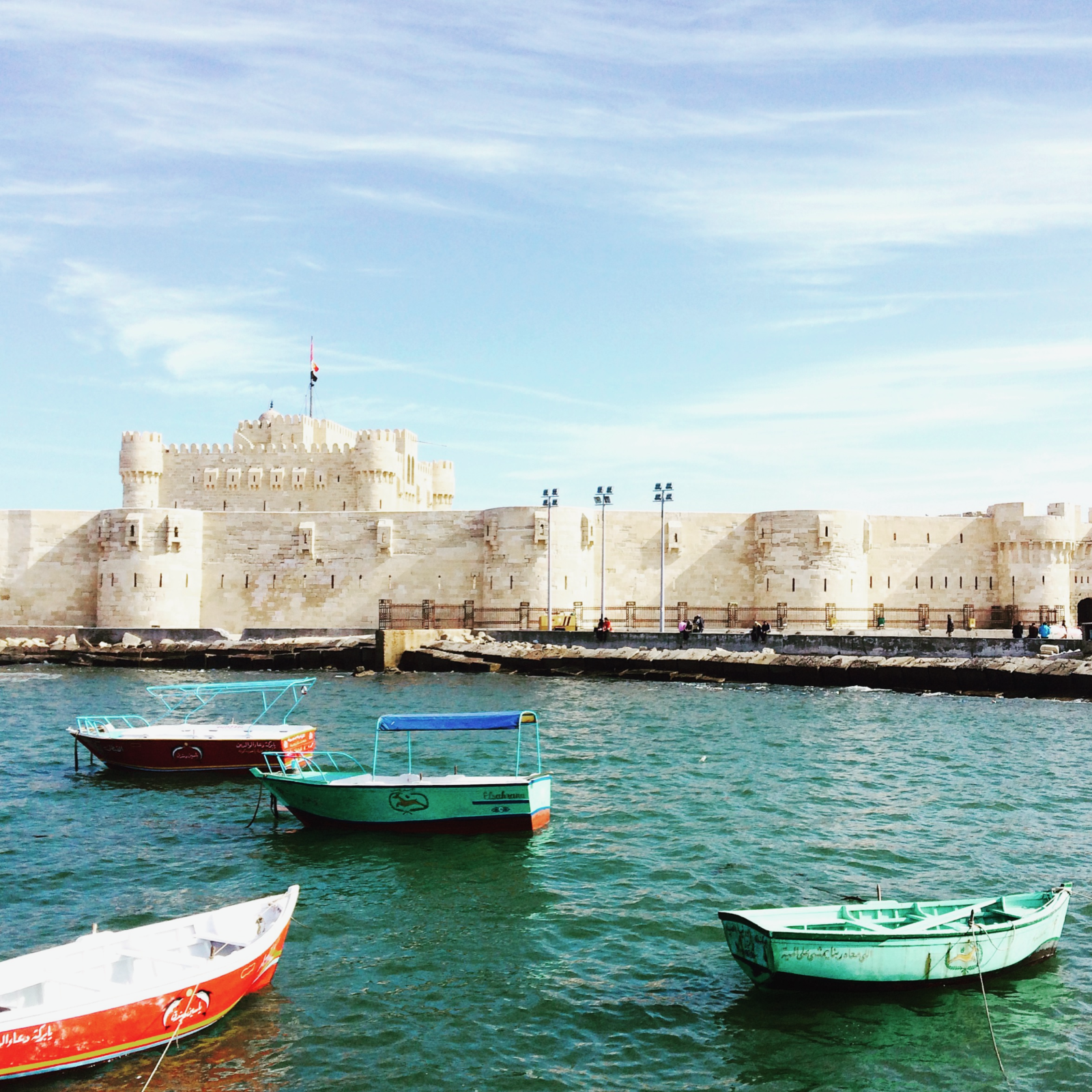Alexandria in Egypt is famous for its legendary library. The official narrative is that the Great Library was built in the 4th century. It flourished for several centuries as the centre of learning and repository of the most papyrus scrolls in the ancient Hellenistic world. Alexander the Great founded the city of Alexandria circa 331 BC. Actually he founded many such named cities; this is the most famous. It is unclear who started the library. Alexander himself, Ptolemy I Soter who became the ruler after Alexander died, or perhaps his son Ptolemy II?
While we may be familiar with the fire at the Great Library of Alexandria, we don’t often know or remember that its decline was gradual. The library’s contents were being stolen or were lost over time. So what is myth and what is the reality?
In November 2015, I was in Cairo for a training. I was one among three foreigners and we ended up spending time together exploring Cairo. Since my friends also signed up for the next course, they had time to see more of Egypt.
Their first stop was Alexandria.
I was due to fly out of Cairo that night and so I was happy to go on a day trip to see Alexandria with them. We arranged for a taxi to drive us to Alexandria and then for him to drop me off at the airport for my late night flight.
I knew nothing about Alexandria, aside from the library, and I was in for a treat at a seaside town.
The Citadel of Qaitbay






The taxi driver took us through the city, sort of a preview, and our first stop was the seaside. We walked towards The Citadel of Qaitbay. Said to be built in the 15th century, where Pharos Lighthouse once stood. The Lighthouse of Alexandria is one of the seven wonders of the ancient world. Underwater expeditions discovered masonry blocks believed to be part of the lighthouse as well as giant statues, obselisks, and sphinxes. You can read more about the Pharos Lighthouse and the history of Quaitbay (or Quait Bey) in this Ancient Origins article. (Be warned – the ads are very annoying)
The Citadel is a popular destination and also a World Heritage Site. It’s a beautiful sight to behold, with its Mamluk architecture which dates back to the Mamluk Sultanate period (1250–1517). In our Cairo sightseeing tour, we saw much of this style, with beautiful stone carving, intricate geometric patterns, and ornate minarets.
That day in Alexandria was bright and so very relaxing by the sea. We took our time, enjoying the breeze, sunshine, and watching people, friends and companions sitting on the wall and kids playing.
While entrance is free, we decided to pass on it. According to the Ministry of Tourism website,
The citadel’s entrance leads to the courtyard where we find the main tower located in the northwest. It consists of a massive three-floored square fort. Its four corners are occupied by half-circular towers that carry protruding balconies for the defence of the city. A tank near the tower supplied soldiers and their horses with water.



Photos (from left): The New Library of Alexandria (Bibliotheca Alexandrina), Monument of the Navy Unknown Soldier, and Mosque of Abu al-Abbas al-Mursi
Mosque of Abu al-Abbas al-Mursi
We visited several major religious sites and landmarks in Alexandria, including the Mosque of Abu al-Abbas al-Mursi, a beautiful mosque in the heart of the city. Getting there, the taxi driver took us through the city streets and this is what I love, seeing the daily life of locals. People doing their shopping at fruit stands and clothing vendors sitting with their friends…the traffic was slow and so it gave me plenty of time to look at the different kinds of shops. Sometimes we got stares, and here and there, people would smile and wave hello. On my way to the airport that evening as the sun was setting, I watched the silhouettes of joggers and friends gathering. For photographers this is the golden hour. Photographs, aside from composition, are about the relationship of light and darkness.
Named after a 13th century Sufi saint, the Abu al-Abbas al-Mursi Mosque was first built in 1775. This is an example of stunning Islamic architecture. For anyone interested in architecture, Egypt is such an amazing place to visit.
This mosque is a place for worship and while we were there, we saw a constant stream of people entering and leaving. It also offers classes on the Quran for kids and community events, including Islamic history lectures. Guided tours are available to learn more about the mosque and its history.
The mosque is open to visitors and people of all faith during non-prayer hours. Visiting any mosque, dressing modestly is necessary. This means covering shoulders, chest, and knees. Whenever we entered a mosque, we also covered our heads. Remember to remove your shoes before stepping inside.
It was already getting late in the day and so we gave it a miss. My friends needed to find a place for their overnight stay and I needed to head to the airport soon after. Just seeing the mosque on the outside, against the backdrop of the blue skies, was breathtaking and hints at the grandeur on the inside.





